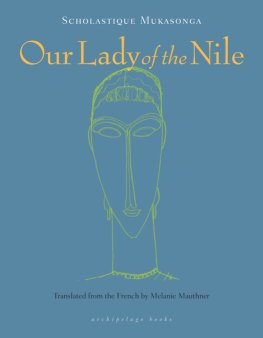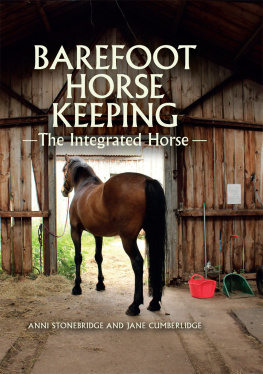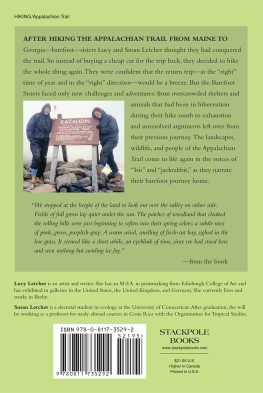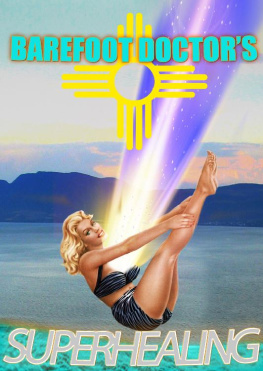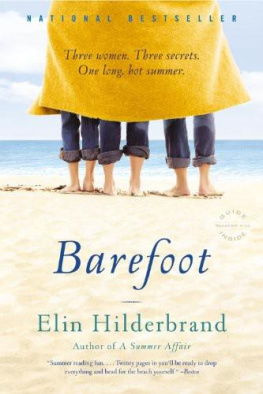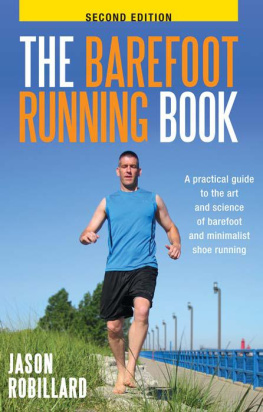Scholastique Mukasonga - The Barefoot Woman
Here you can read online Scholastique Mukasonga - The Barefoot Woman full text of the book (entire story) in english for free. Download pdf and epub, get meaning, cover and reviews about this ebook. year: 2018, publisher: Archipelago, genre: Non-fiction / History. Description of the work, (preface) as well as reviews are available. Best literature library LitArk.com created for fans of good reading and offers a wide selection of genres:
Romance novel
Science fiction
Adventure
Detective
Science
History
Home and family
Prose
Art
Politics
Computer
Non-fiction
Religion
Business
Children
Humor
Choose a favorite category and find really read worthwhile books. Enjoy immersion in the world of imagination, feel the emotions of the characters or learn something new for yourself, make an fascinating discovery.
- Book:The Barefoot Woman
- Author:
- Publisher:Archipelago
- Genre:
- Year:2018
- Rating:4 / 5
- Favourites:Add to favourites
- Your mark:
- 80
- 1
- 2
- 3
- 4
- 5
The Barefoot Woman: summary, description and annotation
We offer to read an annotation, description, summary or preface (depends on what the author of the book "The Barefoot Woman" wrote himself). If you haven't found the necessary information about the book — write in the comments, we will try to find it.
The Barefoot Woman — read online for free the complete book (whole text) full work
Below is the text of the book, divided by pages. System saving the place of the last page read, allows you to conveniently read the book "The Barefoot Woman" online for free, without having to search again every time where you left off. Put a bookmark, and you can go to the page where you finished reading at any time.
Font size:
Interval:
Bookmark:
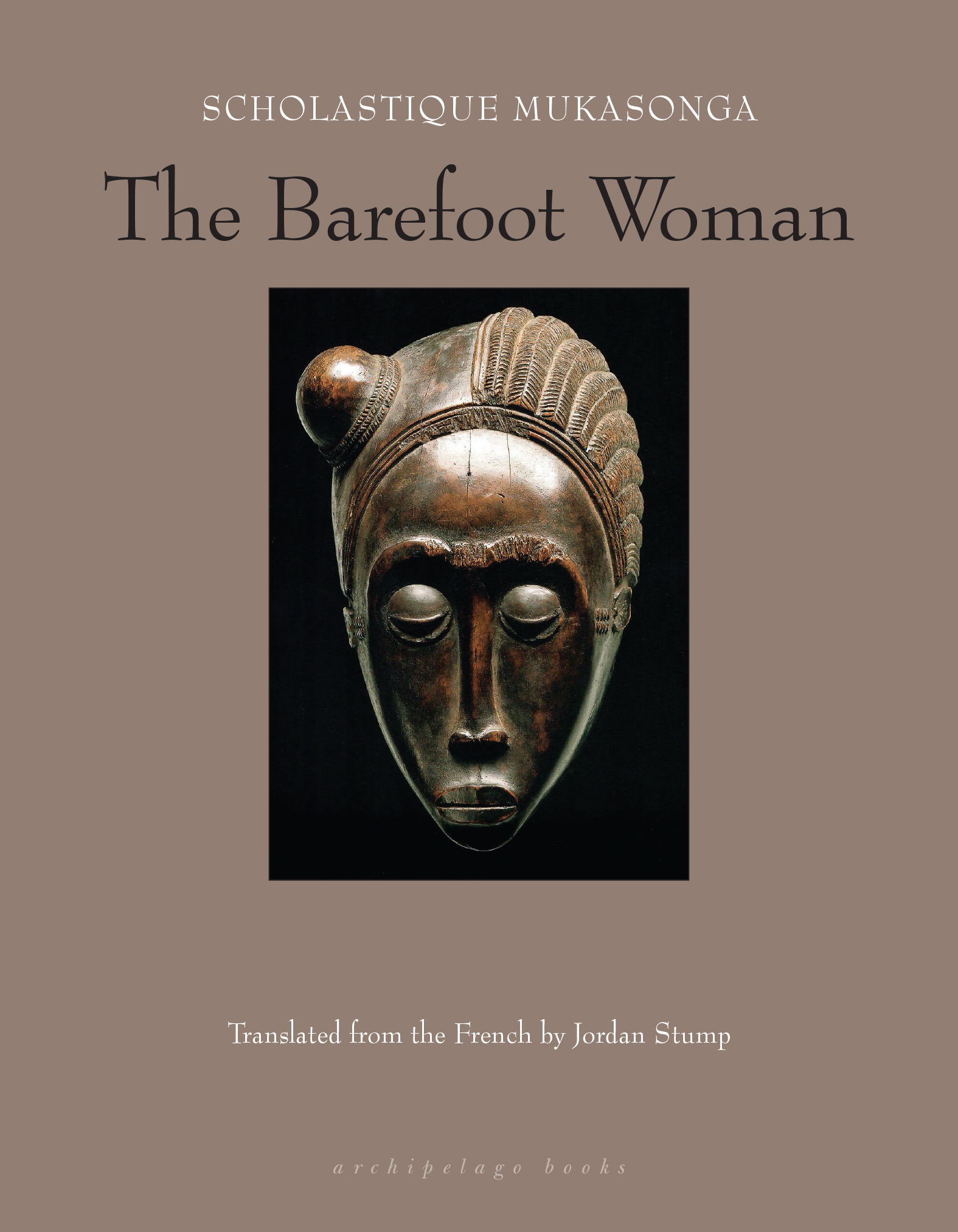

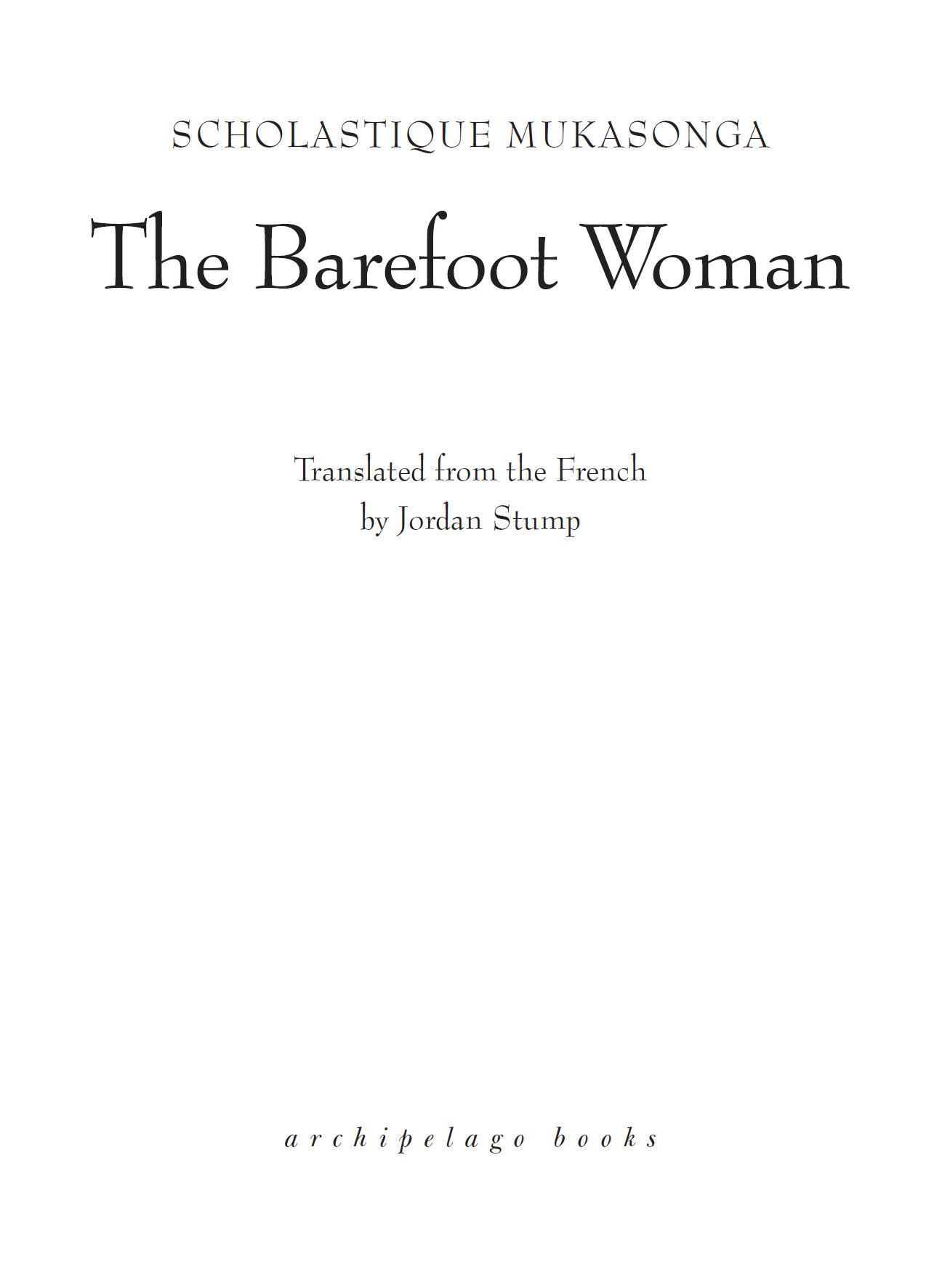
Copyright Editions Gallimard, Paris, 2008
English Translation Jordan Stump, 2018
First Archipelago Books Edition, 2018
All rights reserved. No part of this book may be reproduced or transmitted in any form without prior written permission of the publisher.
Library of Congress Cataloging-in-Publication Data
Names: Mukasonga, Scholastique, author. | Stump, Jordan, 1959- translator.
Title: The barefoot woman / Scholastique Mukasonga ; translated by Jordan Stump.
Other titles: La femme aux pieds nus. English
Description: First archipelago books edition. | New York : Archipelago Books, [2018]
Identifiers: LCCN 2018025794 (print) | LCCN 2018027065 (ebook)
ISBN 9781939810052 (ebook) | ISBN 9781939810045 (pbk.)
Subjects: LCSH: Mukasonga, Stefania. | Mukasonga, Scholastique
GenocideRwandaHistory20th century. | RwandaEthnic relationsHistory20th century.
Tutsi (African people)Crimes againstRwandaHistory20thcentury.
Hutu (African people)RwandaPolitics and government20th century.
RwandaHistoryCivil War, 1994Atrocities | RwandaBiography. | WomenRwandaBiography.
Classification: LCC DT 450.437.M85 (ebook) | LCC DT 4450.437.M85 M8613 2018 (print)
DDC 305.800967571dc23 | LC record available at https://lccn.loc.gov/2018025794
Ebook ISBN9781939810052
Distributed by Penguin Random House | www.penguinrandomhouse.com
Archipelago Books, 232 Third St. # A 111, Brooklyn, NY 11215 | www.archipelagobooks.org
Cover art: The Master of Essankro, Mask with different hairstyles,
Baule region, Ivory Coast, c. 1880. Wood, 25 15 13 cm, private collection.
Cet ouvrage a bnfici du soutien du Ministre des Affaires trangres et du Service Culturel de lAmbassade de France aux Etats-Unis.
This work received support from the French Ministry of Foreign Affairs and the Cultural Services of the French Embassy in the United States through their publishing assistance program.
This book was made possible by the New York State Council on the Arts with the support of Governor Andrew M. Cuomo and the New York State Legislature.
Archipelago Books also gratefully acknowledges the generous support of Nimick Forbesway Foundation, the Carl Lesnor Family Foundation, Lannan Foundation, the Centre National du Livre, the National Endowment for the Arts, and the New York City Department of Cultural Affairs.

v5.4
a
Often, in the middle of one of those neverending chores that fill a womans day (sweeping the yard, shelling and sorting beans, weeding the sorghum patch, tilling the soil, digging sweet potatoes, peeling and cooking bananas), my mother would pause and call out to us, her three youngest daughters, not by our baptismal names, Jeanne, Julienne, Scholastique, but by our real names, the ones given us at birth by our father, names whose meaning, always open to interpretation, seemed to sketch out our future lives: Umubyeyi, Uwamubyirura, Mukasonga! Mama would give us a lingering stare, as if she were going away for a long time, as if she who rarely left the enclosure, who never strayed too far from her field, except on Sundays, for Mass she were making ready for a great voyage, as if she would never again see the three of us gathered around her. And in a voice that didnt sound like hers, that seemed like something from another world, a voice that filled us with terror, she would say: When I die, when you see me lying dead before you, youll have to cover my body. No one must see me. A mothers dead body is not to be seen. Youll have to cover me, my daughters, thats your job and no one elses. No one must see a mothers corpse. Otherwise it will follow you, it will chase youit will haunt you until its your turn to die, when you too will need someone to cover your body.
Those words frightened us. We didnt understand them even today Im not sure I understand them but they sent a chill down our spines. We were convinced we had to keep one eye on Mama at every moment, that we had to be ready, should death suddenly take her, to cover her with her pagne so no one could glimpse her lifeless body. And its true that death hovered insistently every deportee in Nyamata, but to three little girls it seemed to threaten our mother most of all, like a silent leopard stalking its prey. All day long, our anxious thoughts stayed close by her side. Mama was always the first one up in the morning, long before the rest of us were awake, to go off for her daily walk around the village. We trembled as we waited for her to come back, relieved when we finally glimpsed her through the coffee plants, washing her feet in the dewy grass. When two of us went to fetch water or wood, we always told the third: Whatever you do, keep an eye on Mama. And our hearts knew no peace until we came home and saw her shelling beans under the big manioc. But schooldays were the worst, when my mind filled with horrific pictures that blotted out the teachers lesson, pictures of Mamas corpse lying in front of the termite mound she so loved to sit on.
I never did cover my mothers body with her pagne. No one was there to cover her. Maybe the murderers lingered over the corpse their machetes had dismembered. Maybe blood-drunk hyenas and dogs fed on her flesh. Her poor remains dissolved into the stench of the genocides monstrous mass grave, and maybe now, but this too I dont know, maybe now shes deep in the jumble of some ossuary, bones among bones, one skull among others.
Mama, I wasnt there to cover your body, and all I have left is words words in a language you didnt understand to do as you asked. And Im all alone with my feeble words, and on the pages of my notebook, over and over, my sentences weave a shroud for your missing body.
Maybe the Hutu authorities put in charge of the newly independent Rwanda by the Belgians and the church were hoping the Tutsis of Nyamata would gradually be wiped out by sleeping sickness and famine. In any case, the region they chose to send them to, the Bugesera, seemed inhospitable enough to make those internal exiles survival more than unlikely. And yet they survived, for the most part. Their courage and solidarity let them face the hostile wilderness, farm a first little patch of land that didnt completely spare them from hunger but at least kept them alive. And little by little the displaced families makeshift huts became villages Gitwe, Gitagata, Cyohoha where people struggled to recapture some semblance of everyday life, which of course did little to soften the crushing sorrow of exile.
But the Tutsis of Nyamata werent slow to realize that the tenuous survival they seemed to have been granted was only a temporary reprieve. The soldiers of the Gako Camp, built between the villages and the nearby border with Burundi, were there to remind them that they were no longer exactly human beings but inyenzi, cockroaches, insects it was only right to persecute and eventually exterminate.
Font size:
Interval:
Bookmark:
Similar books «The Barefoot Woman»
Look at similar books to The Barefoot Woman. We have selected literature similar in name and meaning in the hope of providing readers with more options to find new, interesting, not yet read works.
Discussion, reviews of the book The Barefoot Woman and just readers' own opinions. Leave your comments, write what you think about the work, its meaning or the main characters. Specify what exactly you liked and what you didn't like, and why you think so.


